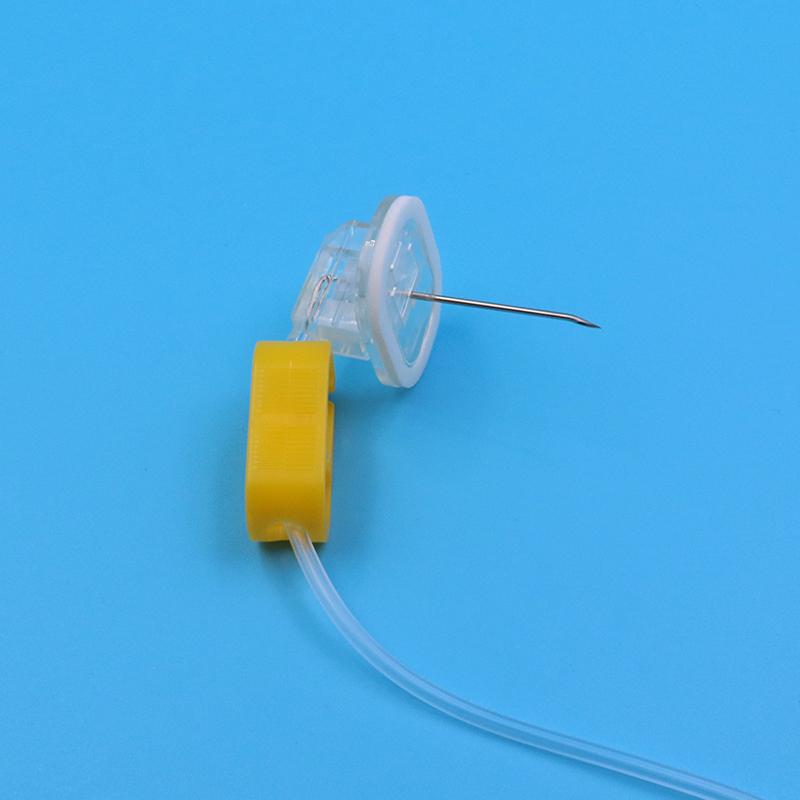Huber Needles Market Insights Reveal Growing Demand in Oncology and Chronic Disease Segments

Introduction
The rising prevalence of chronic diseases and cancer is reshaping the Huber Needles Market. As patient care increasingly focuses on long-term therapeutic regimens, the need for reliable, durable, and low-risk venous access solutions has grown dramatically. Huber needles—known for their non-coring, angled design—are central to this transformation, particularly in managing infusion therapies for oncology and chronic conditions such as autoimmune disorders, hemophilia, and renal diseases.
Oncology Care: A Central Demand Driver
Cancer care remains the largest consumer segment for Huber needles. As more patients undergo chemotherapy through implanted ports, there is a heightened need for precision and safety in every needle insertion. Chemotherapy drugs are potent and can cause tissue damage if not administered directly into the bloodstream. Huber needles ensure secure access without coring the port membrane, minimizing complications and extending port life.
This demand has intensified with the global rise in cancer incidence. According to the International Agency for Research on Cancer (IARC), over 19 million new cases were reported in 2022 alone, with projections indicating an increase of 47% by 2040. Consequently, infusion-based treatments are becoming more frequent, elevating the demand for dependable port access devices.
Chronic Disease Management Fuels Consistent Demand
Beyond cancer, the Huber Needles Market is being shaped by a surge in chronic illnesses requiring recurring infusion therapy. Conditions such as primary immunodeficiency, rheumatoid arthritis, multiple sclerosis, and sickle cell anemia often involve biologic drugs administered through implanted ports.
In these patient groups, regular access over months or years makes non-coring needles indispensable. Unlike traditional needles, Huber needles reduce tissue trauma and infection risk—key concerns in immunocompromised individuals. Additionally, long-term users prioritize comfort, prompting ongoing refinement of needle ergonomics and coating materials.
Pediatric and Geriatric Patient Needs
A significant insight emerging from recent market analysis is the rising adoption of Huber needles in pediatric and geriatric care. Children undergoing long-term chemotherapy or enzyme replacement therapy require smaller gauge needles with enhanced safety features. Similarly, elderly patients benefit from soft-grip wings, self-sealing designs, and shorter needle lengths tailored to thinner skin.
Manufacturers are increasingly customizing product lines to accommodate these age-specific needs, fostering stronger market segmentation and product diversity.
Growth in Infusion Centers and Homecare
The expansion of outpatient infusion centers and the normalization of home infusion therapy have created new channels for demand. Patients with chronic illnesses often prefer these less-invasive environments over hospitals for routine treatments. As noted in previous articles, this shift reinforces the need for safe and user-friendly Huber needles that can be applied by non-specialist caregivers or visiting nurses.
Training modules, video tutorials, and simplified needle kits have emerged to support these users. Providers are also including QR-code-linked instructions directly on packaging to enable instant mobile access to best practices, increasing both safety and confidence.
Design Innovation to Meet Long-Term Use
Another significant insight is the ongoing innovation in Huber needle design to cater to patients undergoing continuous or repeat infusions. Several manufacturers are introducing antimicrobial needle tips, biocompatible coatings, and flexible tubing that reduce skin irritation during extended use.
Patient comfort, reduced infection risk, and device longevity have become central to R&D. For example, low-profile needle hubs are now more common, enabling discreet use under clothing—especially important for younger and working-age patients receiving infusions in public or at work.
Hospital Procurement Strategies
Hospitals, though increasingly complemented by outpatient and home settings, remain dominant buyers of Huber needles. Purchasing decisions are influenced by a facility's oncology load, chronic care units, and infection control policies. Institutional buyers often select needle types based on safety certifications, bulk supply availability, and compatibility with existing port systems.
Hospitals also drive innovation through feedback loops with suppliers, providing real-world performance data that feeds back into product improvements. This dynamic ensures that devices are constantly evolving to meet shifting treatment demands.
Addressing Supply and Training Gaps
Despite growing awareness, gaps remain in terms of access and training, particularly in lower-income countries. Insights from field research show that many healthcare workers in emerging markets still use generic or unsuitable needles for port access due to lack of availability or proper instruction.
Non-governmental organizations and global health agencies are stepping in with donation programs and educational workshops to fill these gaps. Their involvement not only supports immediate clinical needs but also builds long-term demand through capacity-building and trust in Huber needle products.
Data-Driven Insights Fuel Growth Forecasts
Market insights also draw heavily from usage data, which shows a steady uptick in procedures requiring implantable ports. These include immunoglobulin therapy, enzyme therapy, pain management, and fluid maintenance—all treatments where Huber needles are essential. As data integration improves across electronic health records (EHRs), tracking usage patterns is becoming easier, enabling better inventory forecasting and reducing supply chain disruption.
Conclusion
The Huber Needles Market is firmly anchored in the growing global burden of cancer and chronic disease. Insights into evolving clinical practices, demographic trends, and care preferences reveal an ecosystem where reliable port access is not optional—but essential. Looking ahead, competitive strategies will increasingly revolve around innovation and personalization, as discussed in the next article: "Huber Needles Market Analysis Highlights Competitive Pricing and Technological Advancements in Design."
- Art
- Causes
- Crafts
- Dance
- Drinks
- Film
- Fitness
- Food
- Games
- Gardening
- Health
- Home
- Literature
- Music
- Networking
- Other
- Party
- Religion
- Shopping
- Sports
- Theater
- Wellness


